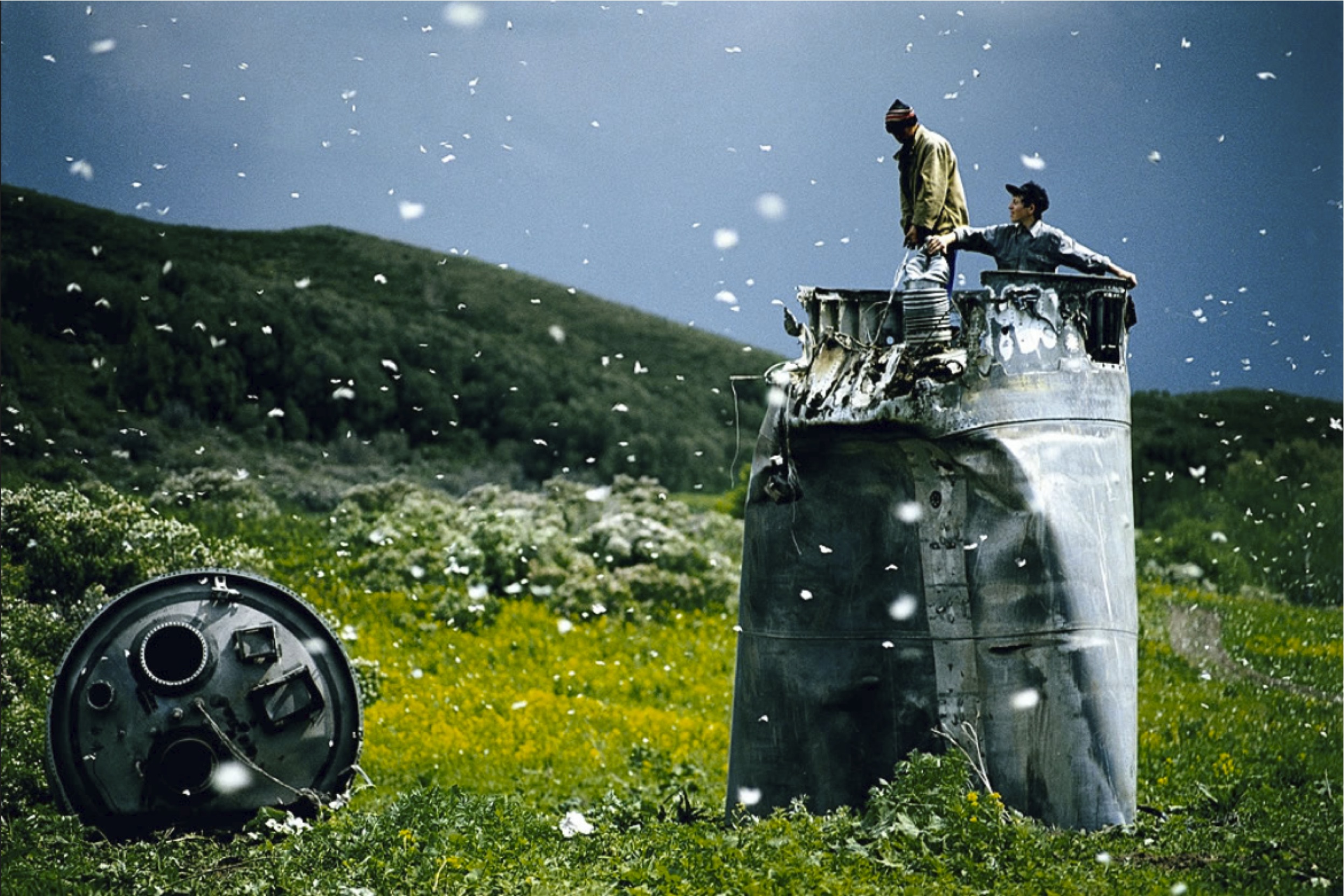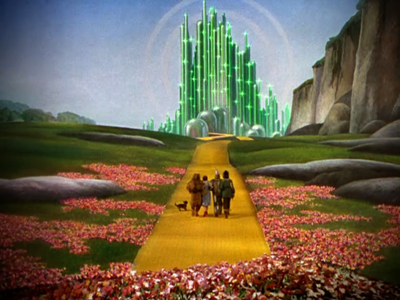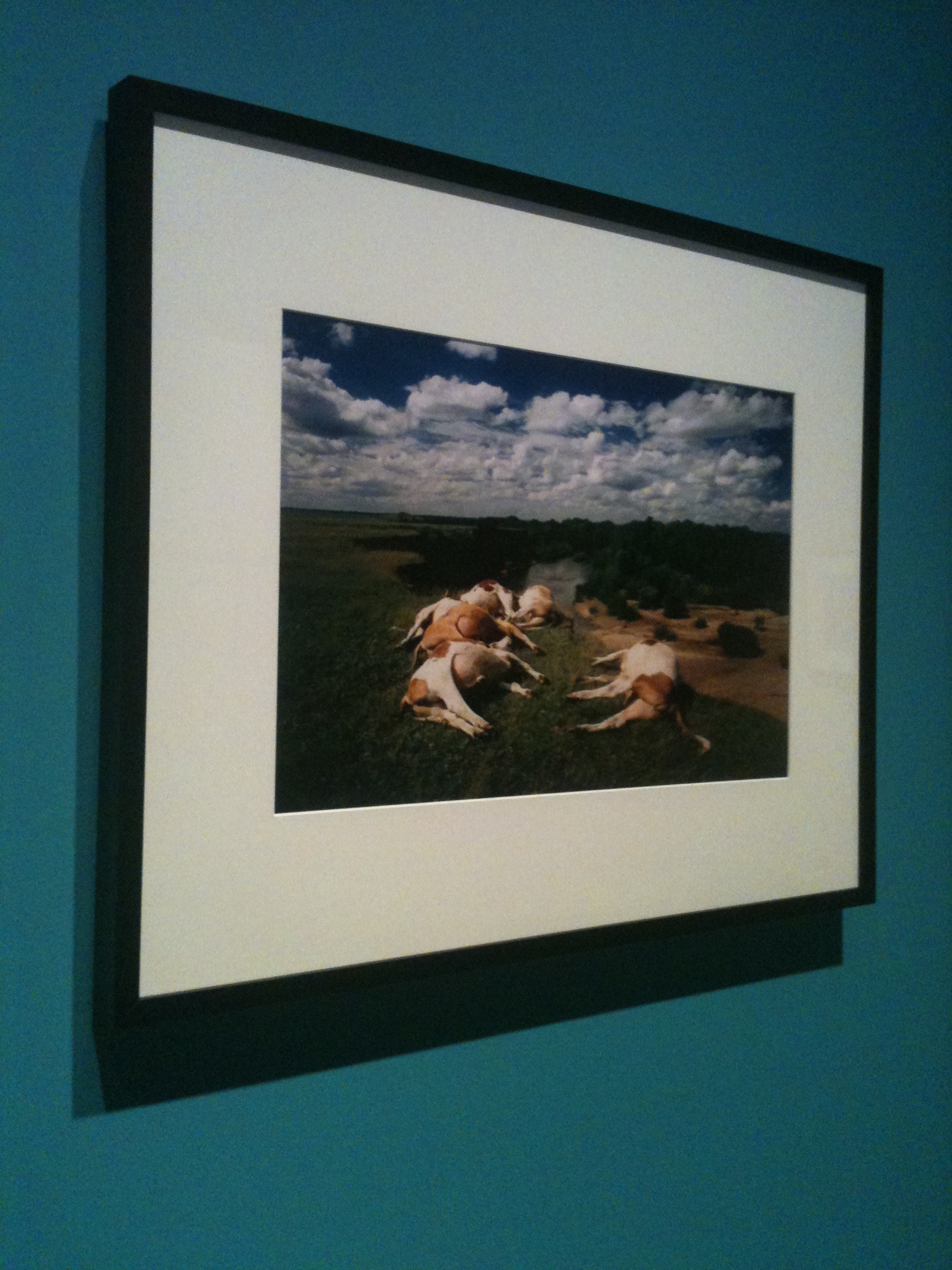
Jonas Bendikson RUSSIA. Altai Territory. 2000. Image via Harry Ransom Center Exhibitions page.
Jonas Bendikson's photo, used in many of the Harry Ransom Center's promotional materials for their current exhibit "Radical Transformation: Magnum Photos in the Digital Age," caught my attention even before visiting the galleries. Before seeing it in person, the image reminded me, strange as it is to say, of the 1939 Technicolor version of The Wizard of Oz.
Seen at a distance or in thumbnail, the photo's most noticeable features are color and contrast. The lush, green rural setting, the surreal, playful placement of figures, and the clash between the built and natural worlds in Bendikson’s photo remind me of the visual presentation of Oz. And Bendikson is known as a photographer who, according to Bruno Bailey, who interviewed him for Vice, “takes photos in countries that don’t exist." He finds places on the edges of a viewer's imagination. Further, the floating swirl of white objects (which the identification card informs the viewer are butterflies, but which, without the card, could easily be snow or many other unexpected things) gives the photo a sense of the magical and the mysterious. And, in a way, the image represents both.
 Still from The Wizard of Oz (1939)
Still from The Wizard of Oz (1939)
I’ve been thinking lately about the concepts of reuse and repurposing. My hypothesis is that a deindustrialized/-izing world requires or demands a certain facility with finding new uses for that which has been discarded, destroyed, or denuded by those very industrial or developmental processes that once made it useful. In the Bendiksen photo, cast-offs from a crashed spacecraft find a new purpose, first as discoveries, as structures to climb, then as scrap material, and finally as artwork. The photo’s promotional use for the exhibit capitalizes on the generative delight and the comforting economy of reuse.

Jonas Bendiksen. RUSSIA. Altai Territory. Dead cows lying on a cliff. The local population claim whole herds of cattle and sheep regularly die as a result of rocket fuel poisened soil. Image author's own.
However, if you visit the Magnum exhibit, a quick glimpse at the photo to the right of this one, by the same photographer and from the same series, changes the story. Now, it becomes clear that the space junk in this new environment has toxic consequences, poisoning the soil with rocket fuel and degrading the habitability of the space, in this case for cattle. The joy of repurposing wasted materials can be a useful human intervention, but, as Bendiksen's larger project illustrates, it's a process accompanied by risks and costs to the surrounding environment. Unlike many Magnum photographers, Bendiksen doesn't choose dramatic scenes or battlefields as his subjects. Rather, his photos convey the daily dramas and discoveries afar that might otherwise go unseen.
Recent comments
2 years 29 weeks ago
2 years 44 weeks ago
2 years 44 weeks ago
2 years 50 weeks ago
3 years 4 weeks ago
3 years 4 weeks ago
3 years 4 weeks ago
3 years 6 weeks ago
3 years 6 weeks ago
3 years 6 weeks ago